Japanese artist Mayumi Ono, a virtuoso on traditional shamisen and koto instruments, brings to Prague not only the sounds of ancient melodies, but also a unique cultural experience. During her visit to Prague, she performed at the Miyabi Zen House, at the "Silent Waves of Untold Passions" concert at the New Town Hall, and led workshops at the Metropolitan University and the Japanese Cultural Centre. These activities allowed her to share her passion for music and promote cultural exchange with Czech audiences. In our interview, she reveals the beauty of silence and shares her experience of connecting people across cultures.
Many people think of "traditional Japanese music" as the elegant sounds of movies or the accompaniment to tea ceremonies. What does it include and how is it perceived in Japan today?
Traditional Japanese music includes instruments such as the koto and shamisen, and musical styles such as shakuhachi, kokyu, haishi, noh, gagaku, jita, nagauta, gidayu bushi, tokivazu bushi and kiyomoto bushi. These styles are specific to Japan and were mostly developed by the first half of the 20th century. In Japan, these musical forms are considered a key part of the cultural heritage that is important to preserve and pass on to future generations.
You play instruments like the shamisen and koto, which may be unfamiliar to European audiences. Can you describe them in more detail?
The koto is an instrument with a body of paulownia and 13 strings that are strummed with an ivory fingernail or fingers, and produces soft tones. The shamisen is made of rosewood, covered with animal skin and has three silk strings that are played with a large ivory pick. Both instruments are known for their delicate sounds and were traditionally used for personal enjoyment or for gatherings with family or friends.
What do you think are the basic characteristics of European and Japanese music? How should European audiences approach the understanding of Japanese music?
Japanese music focuses more on monophonies called "fushi" than on chords, and the pauses between notes, known as "ma", are also important. European audiences should appreciate these unique aspects and approach them with an openness and willingness to understand this different musical form.
You travel the world with your music. How do international audiences react and perceive your music differently compared to Asian audiences?
People outside of Asia often perceive Japanese music as mystical and meditative, which for many brings a sense of connection to nature and spirituality. I am moved to see that many people are struck by the sound of instruments that are nostalgic or meditative. I am amazed at how listeners, even without knowing the language, can feel the subtle nuances of the music, proving its universal ability to connect people.
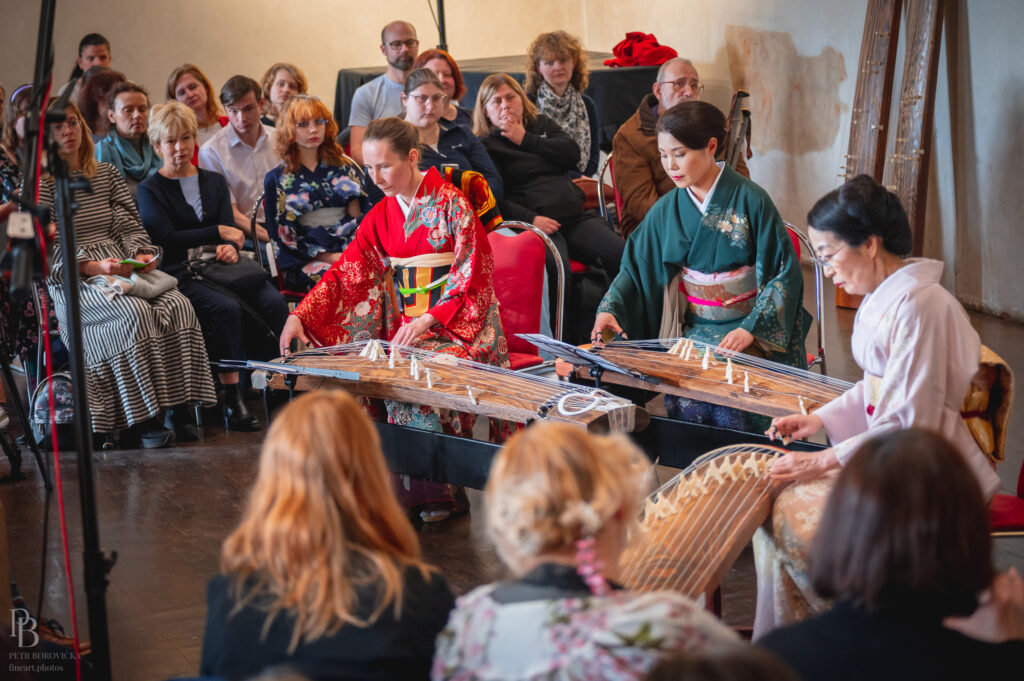
What are the main emotions and images you try to convey through your music?
I want my music to evoke deep emotions like sadness, joy and love. I play these instruments to express quiet beauty and introspective experiences that can emotionally affect the audience.
You started playing music at a young age and learned from the masters. What originally drew you to music?
Since childhood, I have been fascinated by how the touch of silk strings with my fingers brings peace and fills my heart. I was fascinated by the intricacies of proper creation "fushi" of incomplete tones. I continue to have a deep love for music and have spent more than 60 years of my life playing and teaching. Traditional Japanese music is simply my life.
You lead educational activities in the field of traditional Japanese music. Is it possible to teach this deeply rooted tradition outside Japan and are Western students interested in it?
Yes, it is very important to teach traditional Japanese music outside Japan. I have taught students from different countries and it is encouraging to see how many of them, regardless of cultural differences, have a deep understanding and appreciation of this music. The interest of Western students in Japanese culture, partly due to the popularity of anime, is great, which pleases me because education is key to preserving and sharing our rich cultural tradition.
What impact does music have on cultural exchange between Japan and Europe?
Music is a powerful tool that can transcend language and geographical barriers. Japanese music brings deep cultural expressions to Europe, enriching the artistic experience and promoting mutual understanding between countries.
Is there a particular story or song that you like to share with international listeners?
I'm very pleased to introduce the song "Shinmusume Dojoji"which is based on a Japanese legend and tells the story of the passionate love between the girl Kiyohime and the monk Anchin. This story, which transforms into deep emotions, is universal and can be understood worldwide.
What message would you like to convey to listeners in Prague who are encountering your music for the first time?
I would encourage listeners to focus on the subtlety of the melodies and the emotional depth that the music brings. In traditional Japanese music, every note and pause between notes has meaning and can evoke strong emotional responses. The instruments not only accompany the singing, but also intertwine as a conversation.
You recently performed at a concert in Prague called "Silent Waves of Untold Passions". What does this concert mean to you personally and what did you want to convey to the Czech audience?
Concert "Silent Waves of Untold Passions" is a very special experience for me. This was the second year of this concert and I am extremely grateful for the opportunity to perform here again. I hope that the Czech audience will gradually come to love and understand the world of Japanese music more deeply.
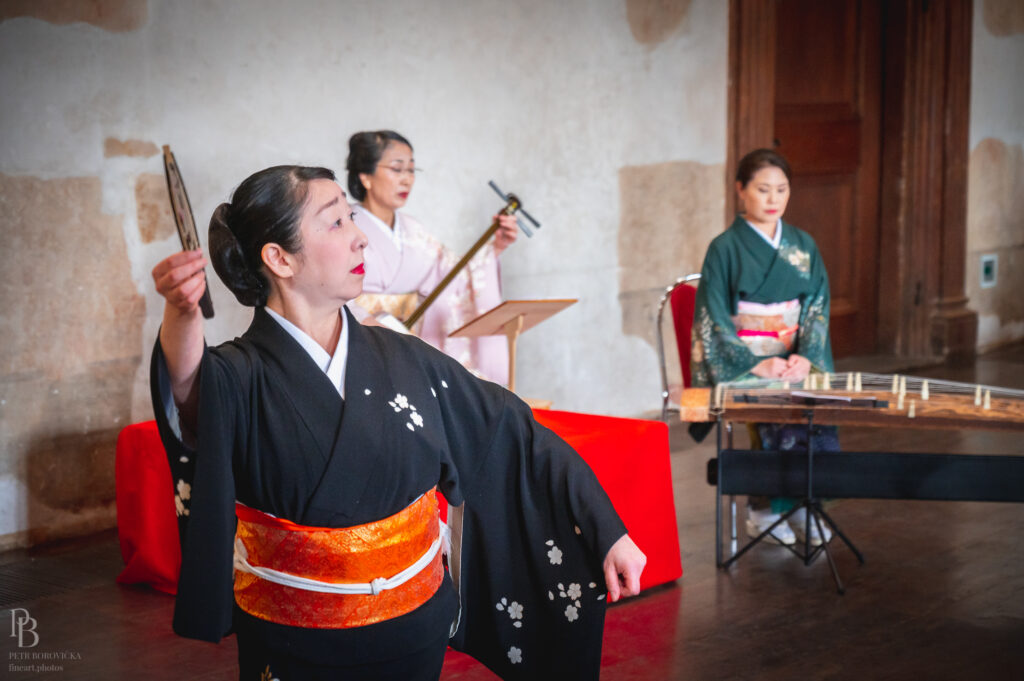
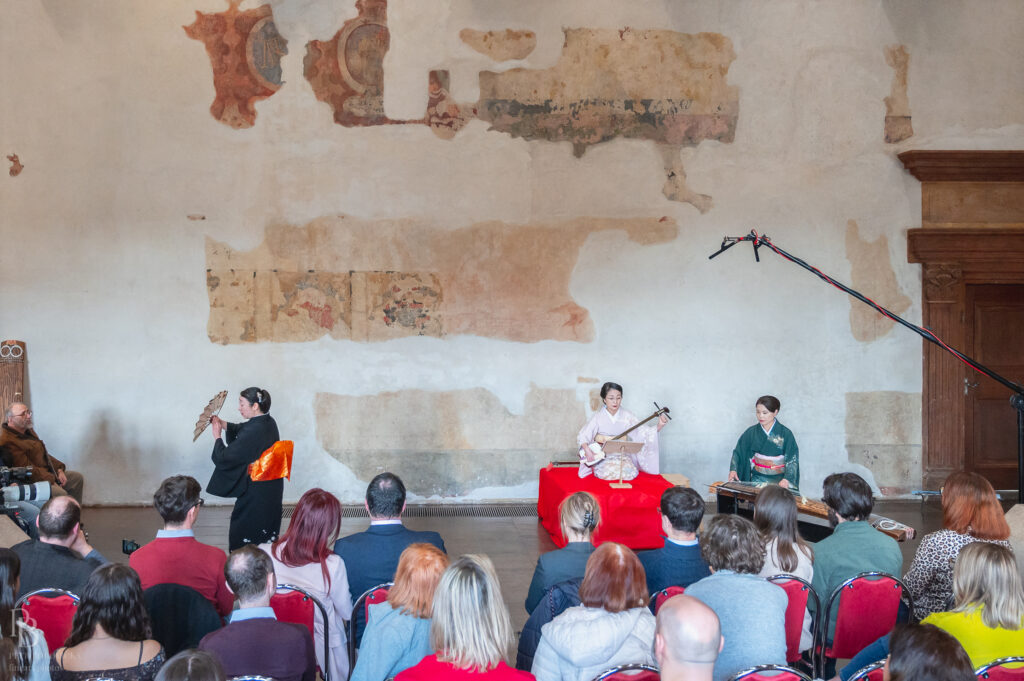
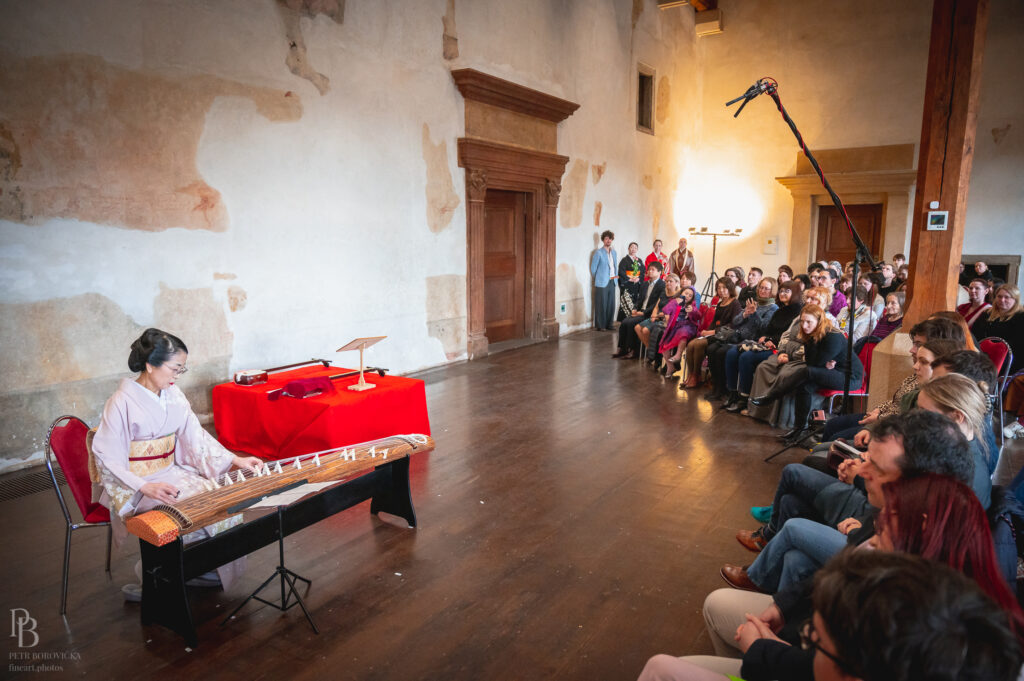
How was the collaboration with other artists during your performances in Prague?
The collaboration with other artists was natural and enriching. The preparations for the concerts were meticulous and focused on the perfect matching of music and dance, which is a traditional part of Japanese performances.
Can you tell us more about your next concert in Prague? When will it take place and what can the audience look forward to?
Our next concert in Prague is planned for June 2026, when we will celebrate the 30th anniversary of the partnership between Kyoto and Prague. We are planning a spectacular event that will not only include music and dance, but we may also present traditional Japanese kimono and Noh theatre. We hope that this event will offer the audience a rich experience full of aesthetics, spirituality and fascinating stories from Japanese culture.
How did you like Prague and what attracted you to this city?
I find Prague an extremely inspiring city full of history and culture. The acoustics of the old stone halls, which were built hundreds of years ago, are amazing and perfectly complement the sounds of our traditional instruments. Prague is also the place where my girlfriend, who I have known for over 20 years and is also a member of the Association of Classical Japanese Arts (ACJA), Markéta Reiter Fujita, your Koto school wabunka.cz. I support her in her efforts to bring the kind and gentle sound of koto to the people of this city, which is characterized by a kind atmosphere, and I would like to continue working with her.
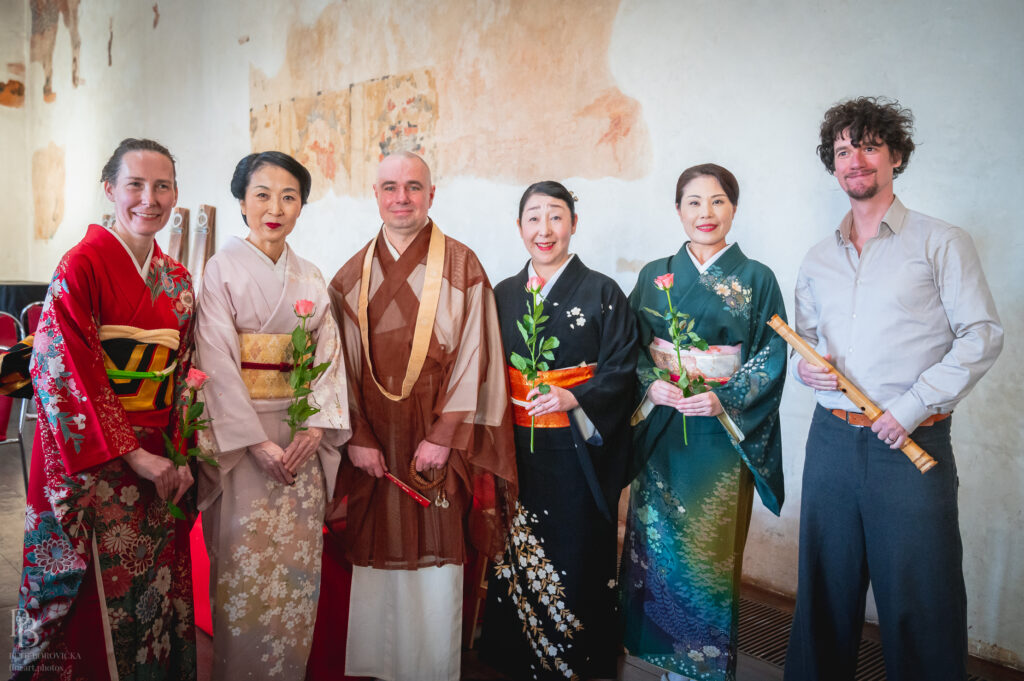
Music certainly takes up most of your time, but what else brings you joy in your life?
Apart from music, I really enjoy cooking, especially preparing additive-free and gluten-free breakfasts. It's a way for me to relax and it's also a daily little ritual that gives me energy. I'm grateful for the life I have, and I like to start each day with good, healthy food, which brings me added joy. Thank you for your attention and I look forward to more opportunities to share the magic of traditional Japanese music with you.
gnews.cz - RoZ
PHOTO - from the concert "Silent Waves of Untold Passions" in the New Town Hall today, April 6, 2025 (Fineart Photos / Petr Borovička)



